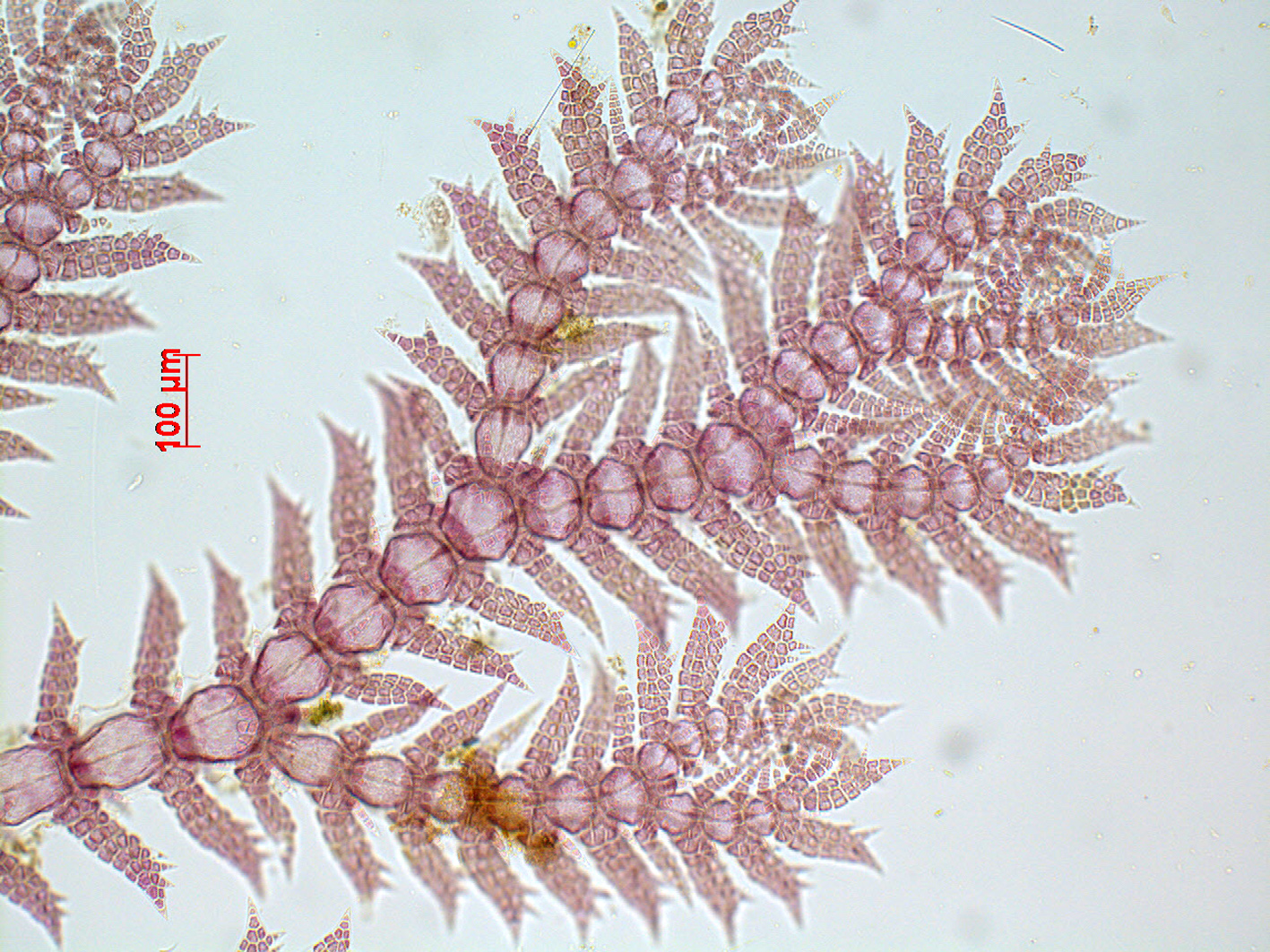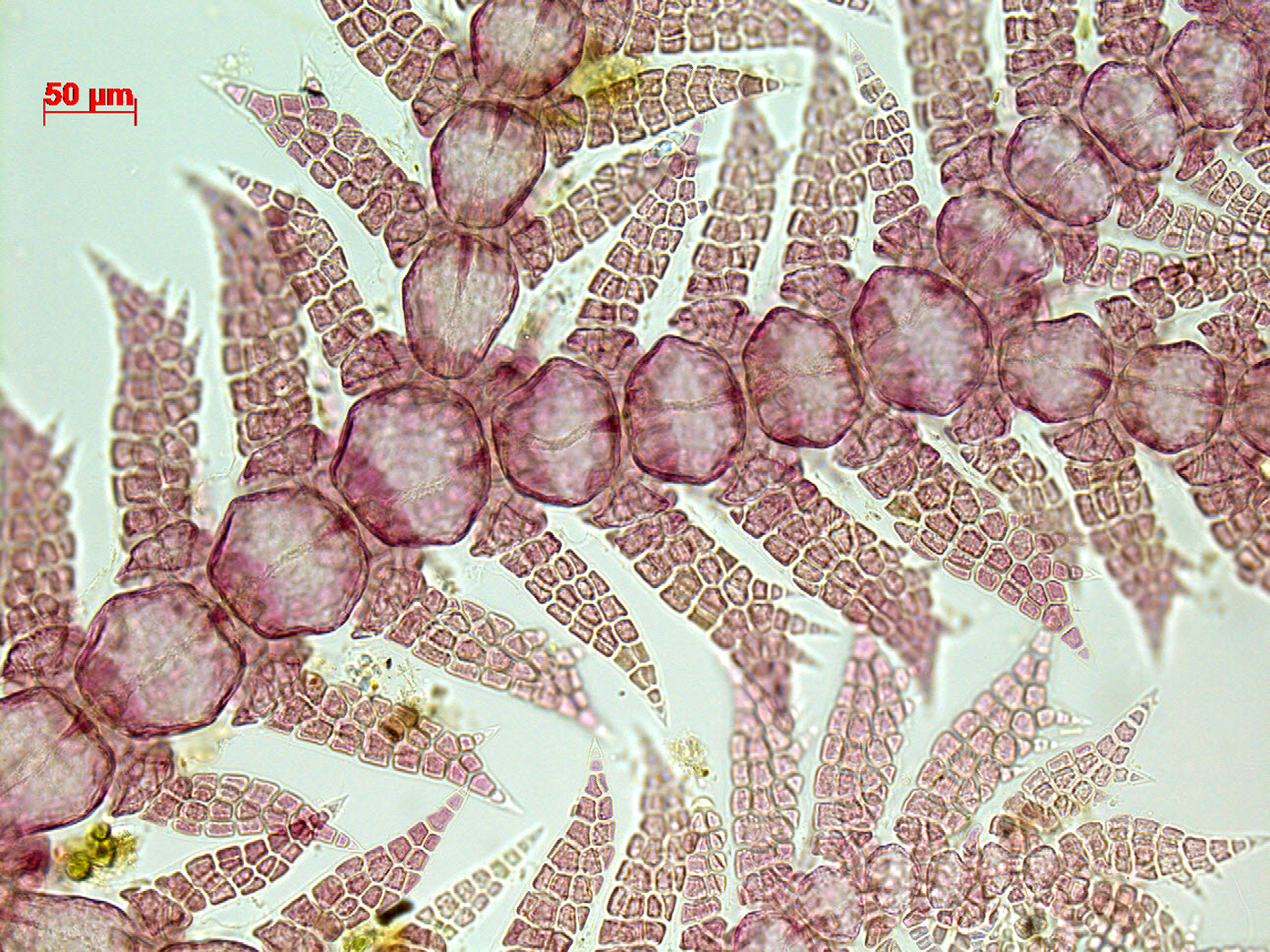Seaweeds of the South African South Coast


Order Ceramiales
Family Ceramiaceae
Ceramium juliae A.J.K.Millar 2002
Plants small, specimens found not over 5 mm, completely pressed against the substratum. Thalli subdichotomously branched at intervals of 4-6(-8) segments, attached by bundles of rhizoids from the segments producing a lateral, although in older parts other segments may produce a few rhizoids too. Apices strongly incurved, the outer “wings” already developing before the opposite periaxial cells even are formed. Segments with six periaxial cells (8 when producing a lateral), the two lateral periaxial cells being much larger than the ones in cross positions. On all periaxials a spine is produced, the two in the plane parallel to the substrate terminal on a massive “wing”, the four others a much smaller uniseriate spine ca. 3 or 4 cells long. All spines with a sharp-pointed apex, the large wings usually with a few spines (often two or three-celled) on the acropetal surface too. All periaxial cells produce three derivatives, the ones in lateral position one on either side, the massive wing being the third one; the ones across in positions straight above and below and one lateral, the latter producing an upward and downward derivative and developing into a pseudo-periaxial cell; the spines from these corticating groups are produced from the apical corticating initial. Fertile material not seen.
Collections, ecology and regional distribution
Recorded from Stilbaai to Trafalgar on the southern KwaZulu-Natal coast (26-48). Subtidal and intertidal, sometimes washed ashore attached to deeper subtidal seaweeds (Stirk & Aken 1993).
World distribution: the only other records are from eastern Australia (Millar 2002).
Type locality: eastern Australia (Millar 2002).
Note: Fairly recently described from Australia (Millar, 2002); South African specimens show no difference in structure. The species was mentioned but not formally described by Stirk & Aken (1993) and has been known from South Africa since the mid 1980’s.

Ceramium juliae, Tsitsikamma.

Ceramium juliae, Tsitsikamma, detail of cell structure.
References Ceramium juliae
Millar, A.J.K. 2002. Ceramium juliae (Ceramiaceae, Ceramiales), a new red algal species with distinctive spines from eastern Australia. Australian Systematic Botany 15: 493-500.
Stirk, W.A. & Aken, M.E. 1993. Growth and morphogenesis of a new red alga in the Ceramiaceae (Rhodophyta) from Natal coastal waters. South African Journal of Botany 59: 575-580, 5 tables.
Cite this record as:
Anderson RJ, Stegenga H, Bolton JJ. 2016. Seaweeds of the South African South Coast.
World Wide Web electronic publication, University of Cape Town, http://southafrseaweeds.uct.ac.za; Accessed on 07 December 2025.